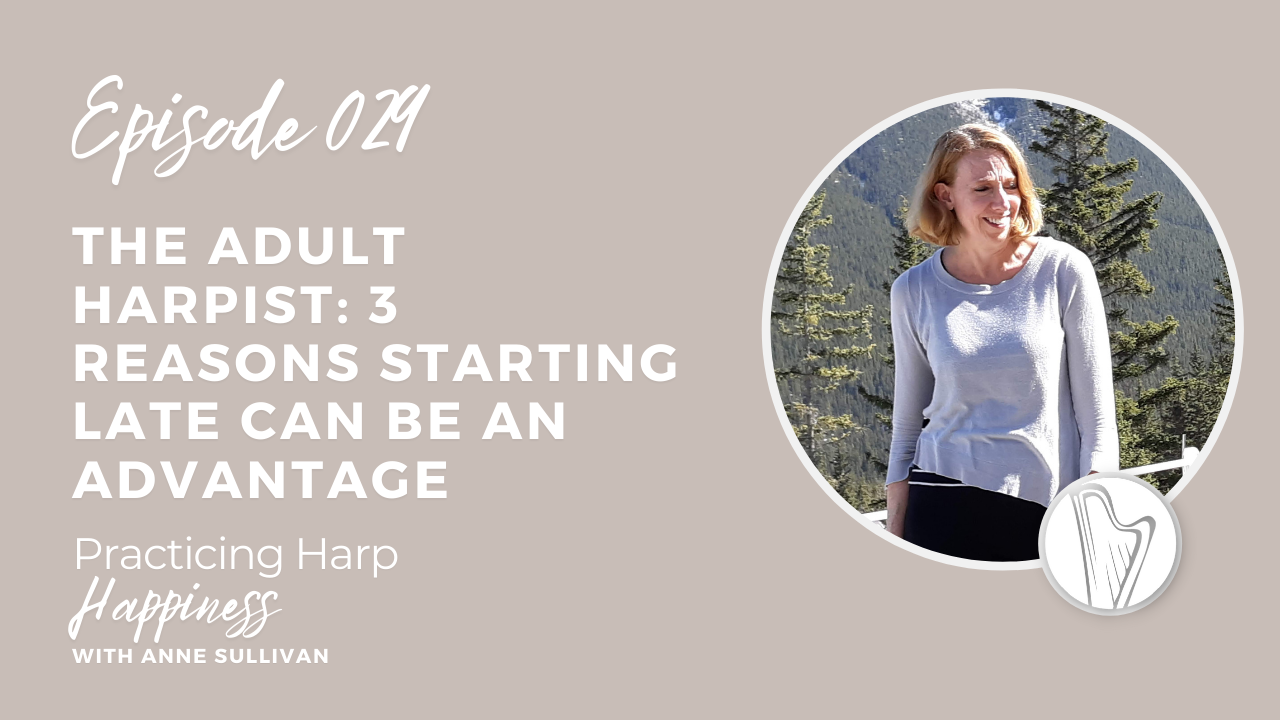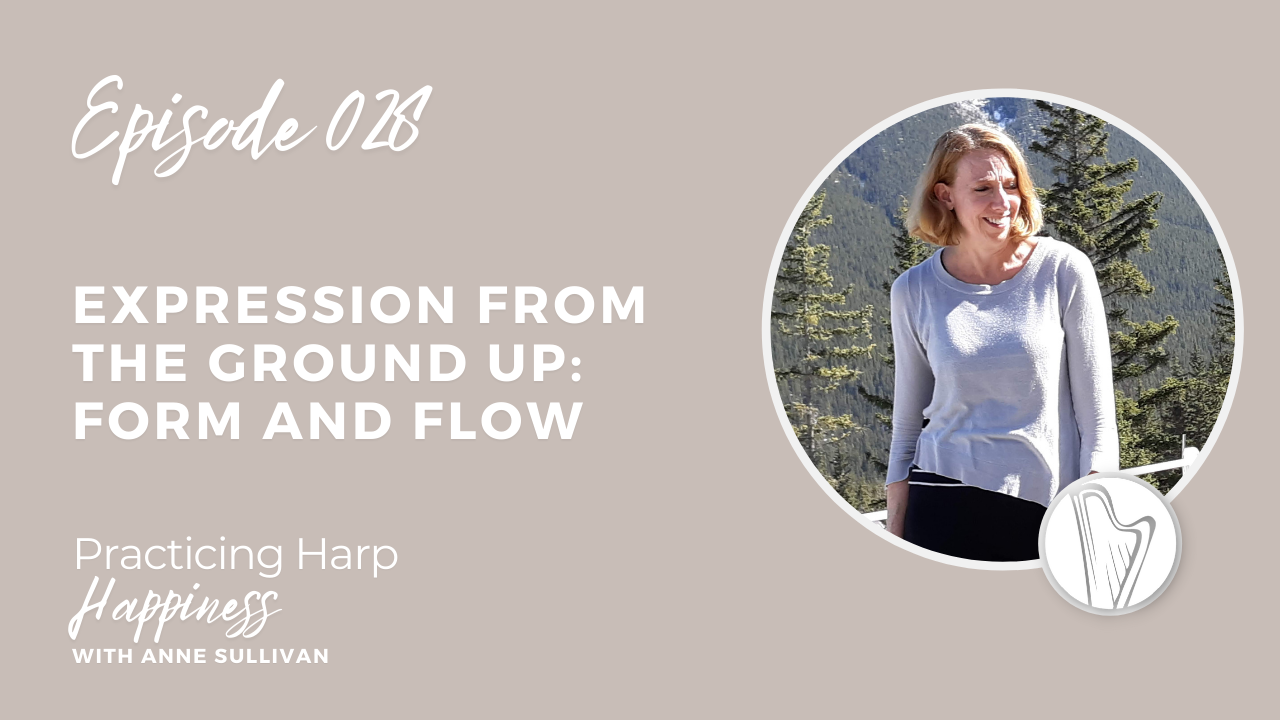Practicing Harp Happiness
#036: Sight Reading Should Be Easy: 4 Simple Strategies

Does sight reading scare you? Do you wish you could instantly play any new piece you want to learn, even just enough to get the idea of how it sounds?
Being able to read music fluently and learn it quickly is a “someday” skill for many harpists. Fortunately, you can improve your sight reading with a few essential skills that you are probably already practicing. The dramatic and nearly instant results will amaze you!
Links to things I think you might be interested in that were mentioned in the podcast episode:
- Getaway Retreat
- 4 Easy Ideas to Take Your Music Reading from Fumbling to Fluent blog post
- Harpmastery.com
Get involved in the show! Send your questions for future podcast episodes to me at [email protected]
#035: The Genetics of Musical Genre: Do You Have to Choose?

If all music uses the same basic elements, why do musical styles sound so different? And why do some connect with us so powerfully and others leave us cold?
Some harpists love to experiment with diverse musical styles.Others prefer to stick with what they love. Today’s episode explores elements of musical style. Discover why your favorite music touches you, and learn how to connect with styles new to you. Musical adventures await!
Links to things I think you might be interested in that were mentioned in the podcast episode:
Get involved in the show! Send your questions for future podcast episodes to me at [email protected]
#034: Tweaking Your Technique: 3 Ways to Level Up

Is your technique your biggest harp issue?
Perhaps you know your technique is holding you back. Maybe you know you need to find the next level but aren’t sure how to get there.
Today Anne reveals three ways to level up your technique and free your fingers to do your bidding. The good news? You might be doing the right things already. The better news? A faster, more accurate and secure technique is just a few simple tweaks away.
Links to things I think you might be interested in that were mentioned in the podcast episode:
Get involved in the show! Send your questions for future podcast episodes to me at [email protected]
#033: Choosing Your Next Step: How to Eat an Elephant

The energy of the New Year can be a trap as our good intentions become overwhelming. We burden ourselves with too many resolutions, too many projects and too many brilliant ideas. That’s the fast track to disappointment.
Today Anne explains why the best strategy for harp success in the new year is a one step at a time approach. Choosing your next best step and creating a plan to ensure you take that step are key to your harp happiness this year.
Links to things I think you might be interested in that were mentioned in the podcast episode:
Get involved in the show! Send your questions for future podcast episodes to me at [email protected]
#032: My 2022 Harp Happiness List

I’m going to get a little personal about harp happiness and it will probably surprise you.
On this last podcast of 2021 I share my favorite harp moments of the past year and my harp goals for 2022. They aren’t the type of goals you probably imagine. Yes, there are some achievement type goals but there are more esoteric ones too. I hope they may inspire you to decide on some 2022 harp happiness goals for yourself. Here’s to a Happy New Year for all!
Links to things I think you might be interested in that were mentioned in the podcast episode:
- Join our private Facebook group, Harp Happiness HQ
- Musical Extravagance: The Ultimate Holiday Gift
- Harpmastery.com
Get involved in the show! Send your questions for future podcast episodes to me at [email protected]
#031: Relax, Review, Enjoy: A Practice Plan for the Holidays

Is holiday harping making you stressed? As the angel said, “Fear not!”
We all find it difficult to find practice time during the holidays, even though this is the time we need to keep our fingers ready to play. In this episode of the podcast you will discover a stress-free practice plan that will keep you in shape, no matter how many cookies you still need to bake. All it takes is a few minutes and a little planning.
Links to things I think you might be interested in that were mentioned in the podcast episode:
Get involved in the show! Send your questions for future podcast episodes to me at [email protected]
#030: Conquering Cantique de Noel: An Arpeggio Study

If we harpists had to choose one technical skill to have sharp for the holidays, it would have to be smooth, even arpeggios.
Learn four different arpeggio styles and the best practice tips for each, revealed through four different harp arrangements of the beloved Christmas favorite, “O Holy Night.” Whether the arpeggios go up, down or all around in your own favorite arrangement, you’ll discover the strategies you need to make them sparkle.
Links to things I think you might be interested in that were mentioned in the podcast episode:
Get involved in the show! Send your questions for future podcast episodes to me at [email protected]
#029: The Adult Harpist: 3 Reasons Starting Late Can Be An Advantage

“If only I’d started years ago,” is a common refrain of many adult harp students. But adult students, even beginners, have significant advantages over younger ones.
Slower fingers and mental processes are part of aging but that doesn't mean that music and harp learning needs to be slower too. On this show, Anne reviews the “just for grown-ups” learning techniques which help her adult students experience faster and more rewarding progress.
Links to things I think you might be interested in that were mentioned in the podcast episode:
Get involved in the show! Send your questions for future podcast episodes to me at [email protected].
#028: Expression from the Ground Up: Form and Flow

The most powerful musical expression isn’t created by magic. It’s written into each note. It’s up to the performer to discover it and bring it to life.
If you’ve ever questioned your expressive choices or felt uncomfortable making those choices, today’s show reveals how to discover the composer’s intention and interpret it with creativity and confidence. Plus I’ll show you where to look - and listen - for the hidden expressive clues in any piece.
Links to things I think you might be interested in that were mentioned in the podcast episode:
- Join My Harp Mastery
- Blog post on Your 5 Day Plan to Better Musical Awareness
- Beyond Dynamics: 3 Keys to More Musical Harp Playing podcast
- Harpmastery.com
Get involved in the show! Send your questions for future podcast episodes to me at [email protected]
#027: Cure the Carol Blahs: Strategies for Practicing Music You Know Too Well

If you find it difficult to practice Christmas Carols, you are not alone.
Reviewing holiday music is an unusual kind of challenge. Everyone knows the songs so well we dread making even a single mistake. But we know them so well we practice on autopilot. On today’s show I share how to do the practice you need and still keep the holiday spirit with three simple strategies that make even the most tired carol (or any music) fun to practice and play.
Links to things I think you might be interested in that were mentioned in the podcast episode:
- Cracking the Nutcracker Code webinar
- Cadenza Play In LIVE Friday, November 26 at Noon Eastern time
- My Harp Mastery
- How to Play Music You Hate Blog post
- Harpmastery.com
Get involved in the show! Send your questions for future podcast episodes to me at [email protected]

